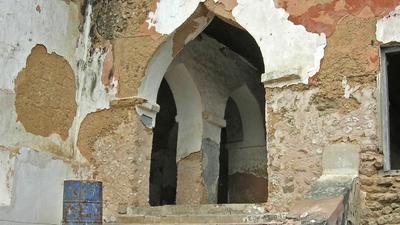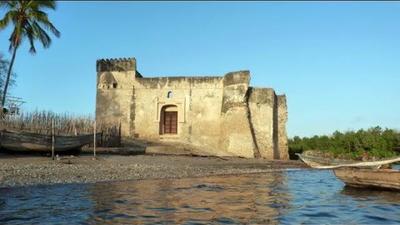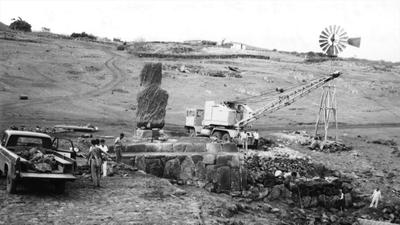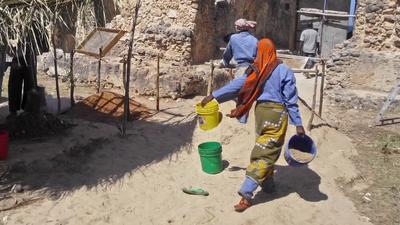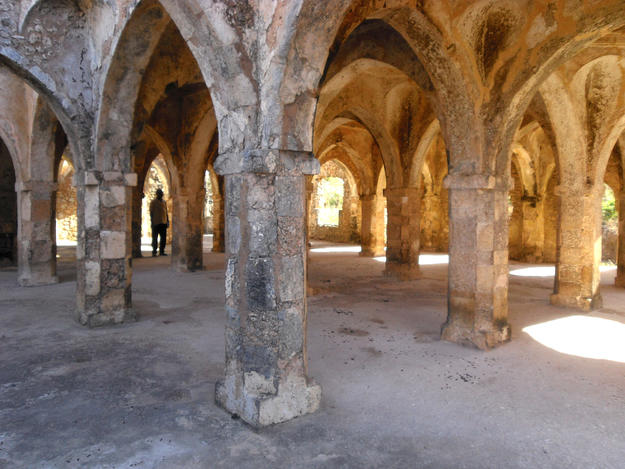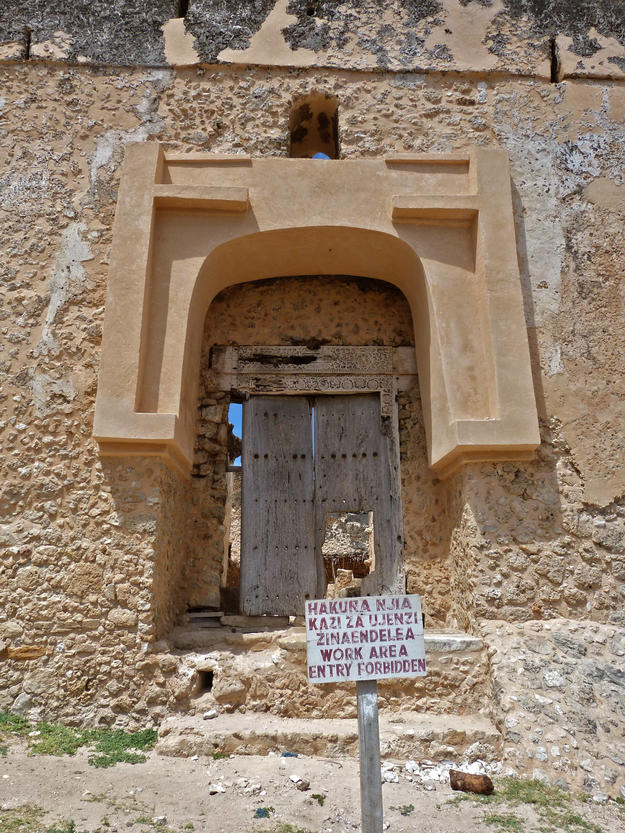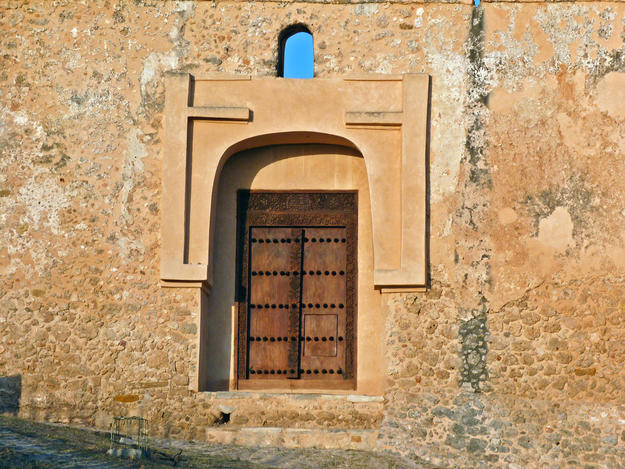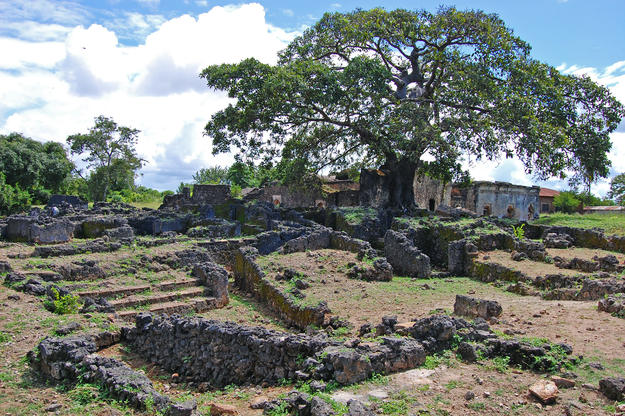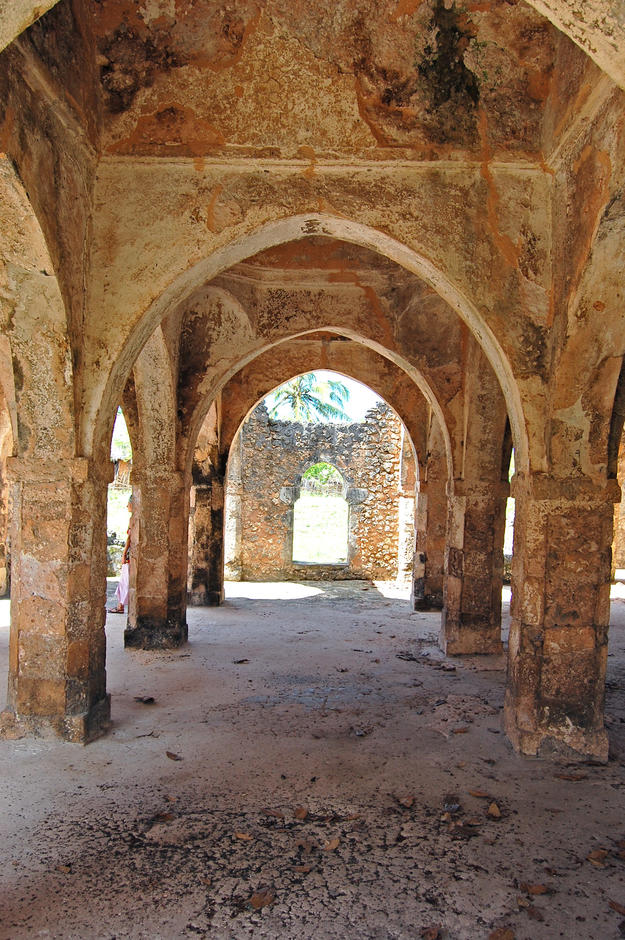The island of Kilwa Kisiwani is located in the south of Tanzania, a short boat ride from the mainland. It was once a thriving seaport; from the eleventh century the sultans of Kilwa grew rich from control of the gold trade. Gold was mined at Great Zimbabwe far off in the interior, and carried by caravan and then by boat to Fatimid Cairo, passing through Kilwa on its way north. Kilwa grew in the thirteenth and fourteenth centuries and is mentioned by several early chroniclers. The most significant standing ruins from this period are the Great Mosque and the Palace at Husuni Kubwa. The palace was unrivaled in East Africa for its architectural sophistication and splendor. Founded in the fourteenth century, the Great Mosque was, up until the sixteenth century, the largest mosque in sub-Saharan Africa. In 1498, the Portuguese arrived in East Africa and quickly asserted control over the region’s trade. They built a fort at the edge of the town, which was completed in 1505.
1996 and 2008 World Monuments Watch
Kilwa Fort has been ravaged by the elements and threatened by coastal erosion and rising sea levels exacerbated by the reduction of mangrove forests that helped regulate the impact of the water. The fort was included on the World Monuments Watch in 1996, and the historic sites on the island were included collectively on the Watch in 2008. That same year, WMF began conservation work at the fort, concentrating on stabilizing walls, preventing further deterioration of the structure, replanting mangrove forests, and strengthening the building’s resilience to the effects of local climatic conditions. In the summer of 2011, Kilwa and its sister island of Songo Mnara were awarded a grant from the U.S. State Department’s Ambassadors Fund for Cultural Preservation. The $700,000 grant has gone toward conserving the buildings and ruins, limiting coastal erosion, and improving the living conditions of the islands’ inhabitants. On Kilwa, the ruins of the Palace of Husuni Kubwa and a collapsed section of the original town wall near Makutani Palace were both restored. In March 2014, in addition to restoring 13 structures, the conservation team completed the reconstruction of the main water reservoir on Songo Mnara, providing a regular supply of fresh water to the island, which previously had to import it during the dry season. In June 2014, the World Heritage Committee removed the ruins of Kilwa Kisiwani and Songo Mnara from the UNESCO List of World Heritage in Danger, noting that the “management and safeguarding” of the site “have improved to the point where the site can be removed” from the list.
Kilwa Kisiwani and Songo Mnara are among the most significant historic sites along the Swahili coast of East Africa and both were declared a UNESCO World Heritage Site in 1981. The standing ruins of Kilwa Kisiwani represent a slice through East African history, from the high point of the Swahili civilization, through decline under Portuguese control, to annexation by the Omani Empire based in Zanzibar. Structures survive from all of these periods, making Kilwa Kisiwani one of the foremost built-heritage sites in East Africa. In addition to preserving the island’s rich heritage, training local craftspeople and expanding cultural tourism are other central components of WMF’s program, as both provide an increasingly important source of income for the people of Kilwa Kisiwani, Songo Mnara, and their neighbors on the mainland. Currently, 75 percent of the total population and 53 percent of the female population on Songo Mnara are employed by the project. In addition, investments have been made to improve visitor infrastructure on the island, including installing a new restroom facility, in an effort to encourage tourism.
World Monument Fund's work at the Historic Sites of Kua has been made possible, in part, by support from the U.S. Ambassadors Fund for Cultural Preservation (AFCP) and the U.S. Embassy Dar es Salaam.
Videos
